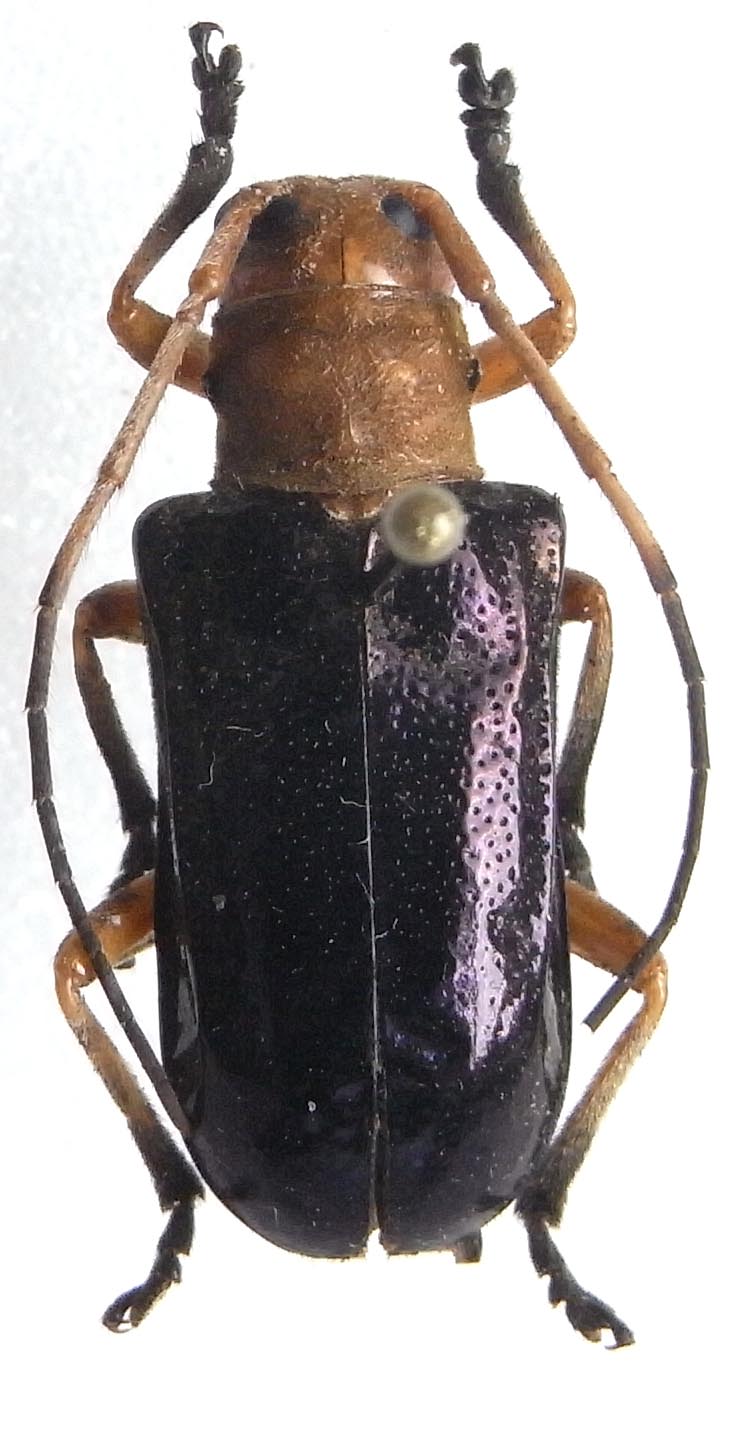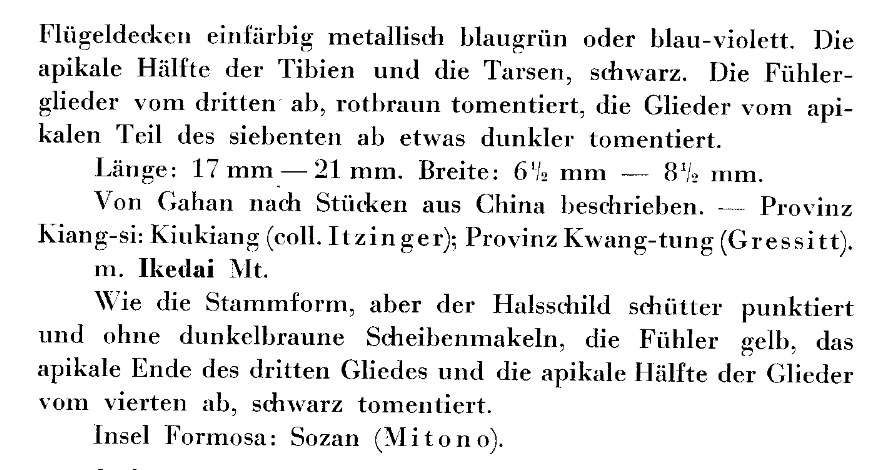| T O P I C R E V I E W |
| Xavier |
Posted - 11/09/2011 : 13:43:22

Bonjour,
18 mm pour cet ex. du nord Laos;
Ressemble à Glenida cyaneipennis Gahan, 1888... mais l'apex des élytres est arrondi.
Tubercules du thorax noirs à l'apex. |
| 7 L A T E S T R E P L I E S (Newest First) |
| Xavier |
Posted - 10/05/2021 : 07:14:04
Je pense que c'est bien Glenida puncticollis Breuning, 1961, car rien ne le contredit dans la description. |
| Francesco |
Posted - 17/03/2013 : 16:35:54

(continuing from typical form)
...Elytra unicolour metallic blue-green or blue-violet. Tibial apical half and tarsi black. Antennomeres with red-brown pubescence starting from the III, dark starting from the apical part of VII.
...
m. ikedai Mitono
As the typical form, but pronotum sparsely punctuated and without dark brown discal spot, antennae yellow, the apical end of the antennomere III and the apical half of the antennomeres starting from IV black.
mmmhm... by reading again, this seems to correspond to this species! |
| Francesco |
Posted - 17/03/2013 : 14:20:23

Glenida puncticollis n. sp.
Close to soffusa Gahan, but antennae slightly longer than body (F), under eyes-lobes a bit shorter than cheeks, head unpunctuated, pronotal disc locally very densely and moderately finely punctuated, humeral ridge feebly curved, and the colouration fairly different.
Red-yellow. A small rounded black spot on the prothoracic lateral teeth. Elytra shiny blue-violet. Tibial apical third and tarsi brown-black, antennomere V, especially on the dorsal side, and antennomere VI-XI brown-black. |
| Francesco |
Posted - 17/03/2013 : 12:38:52
Oui, malheureusement elle ne correspond pas exactement à la description de puncticollis... |
| Xavier |
Posted - 16/03/2013 : 16:42:05
Bon, selon Xaurus, il semble que cette espèce serait plutôt Glenida puncticollis Breuning, 1961 |
| Xavier |
Posted - 08/10/2011 : 15:46:46
Merci pour cette réponse très complète Francesco  |
| Francesco |
Posted - 08/10/2011 : 14:53:18
Oui, selon Breuning ceci devrait être la morpha (sous-espèce selon Gressitt) ikedai Mitono de Glenida cyaneipennis, décrite du Formose.
Les phots de ceux deux formes sont inversées sur le livre de Logicorn Beetles de Chine |
|
|


